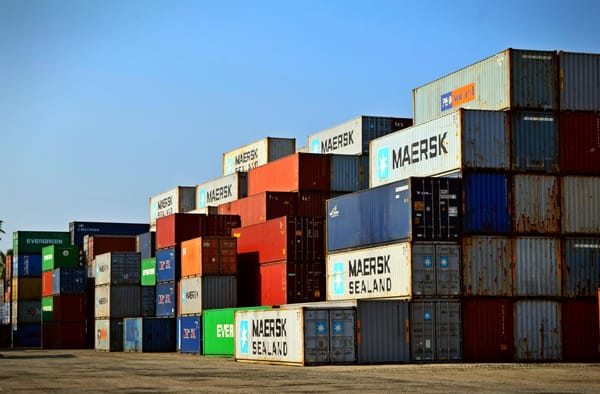What is Document Classification and How GPT Can Help You
Discover how GPT-powered document classification can improve efficiency. Learn how Airparser leverages GPT to automate your document management.

What is Document Classification and How GPT Can Help You
In today’s fast-paced, data-driven world, managing documents effectively is more important than ever. Businesses generate and handle a vast amount of documents daily, from emails and invoices to contracts and reports. Keeping these documents organized is crucial for smooth operations. This is where document classification comes into play. In this article, we’ll explore what document classification is and how GPT technology can help automate and enhance this process, making it more efficient and accurate.
Understanding Document Classification
What is Document Classification?
Document classification is the process of organizing documents into categories based on their content, format, or purpose. This could mean sorting documents into folders, tagging them with specific labels, or assigning them to predefined categories. Proper document classification makes it easier to find and manage information, ensuring that it is stored in a logical and accessible way.
Types of Document Classification
There are several ways to classify documents. Some common methods include:
- Content-Based Classification: Grouping documents by the information they contain. For example, classifying reports, contracts, or invoices based on their subject matter.
- Format-Based Classification: Sorting documents by their format, such as PDFs, Word documents, or emails.
- Purpose-Based Classification: Categorizing documents by their intended use, like internal memos, customer communications, or legal agreements.
Why Document Classification is Important
Effective document classification is essential for several reasons. It helps businesses:
- Organize Information: Proper classification ensures that documents are stored in an orderly manner, making it easier to retrieve and manage information.
- Improve Access: With well-organized documents, employees can quickly find the information they need, improving productivity and decision-making.
- Ensure Compliance: In industries with strict regulatory requirements, proper document classification is crucial for maintaining compliance and avoiding legal issues.
Challenges in Traditional Document Classification

Manual Classification
Traditionally, document classification has been a manual process. Employees sort and tag documents by reading their content and assigning them to specific categories. While this method can work for small volumes of documents, it becomes increasingly challenging as the amount of data grows.
Common Issues with Manual Classification
Manual classification comes with several challenges:
- Time-Consuming: Sorting and tagging documents manually is a slow process, especially when dealing with large volumes of information.
- Prone to Errors: Human error is inevitable in manual processes. Misclassifications can lead to lost documents or difficulty in retrieving important information.
- Inconsistency: Different employees may classify documents differently, leading to inconsistencies that can cause confusion and inefficiency.
The Need for Automation
As businesses handle more and more documents, the need for automated classification solutions becomes clear. Automation can save time, reduce errors, and ensure consistency across the organization.
How GPT Can Enhance Document Classification
What is GPT?
GPT, or Generative Pre-trained Transformer, is a type of artificial intelligence that excels in natural language processing (NLP). It can understand and generate human-like text, making it incredibly powerful for tasks that involve analyzing and categorizing written content.
How GPT Works in Document Classification
GPT can be used to automate document classification by analyzing the content of documents and categorizing them based on their meaning and context. Unlike traditional systems that rely on rigid templates or keywords, GPT understands the nuances of language, allowing it to classify documents more accurately.
Benefits of Using GPT for Document Classification
- Accuracy: GPT improves the accuracy of classification by understanding the context of the content, reducing the chances of misclassification.
- Efficiency: By automating the classification process, GPT saves time and allows employees to focus on more important tasks.
- Scalability: GPT-powered systems can easily scale to handle large volumes of documents, making them ideal for growing businesses.

Practical Applications of GPT in Document Classification
Use Case 1: Sorting Emails
Emails often contain valuable information but are notoriously difficult to classify due to their unstructured nature. GPT can analyze the content of emails and categorize them based on the subject, sender, or urgency, helping businesses manage communication more effectively.
Use Case 2: Organizing Legal Documents
Law firms and legal departments deal with a vast array of documents, from contracts to case files. GPT can assist in categorizing these documents based on their content, making it easier to organize and retrieve important legal information.
Use Case 3: Streamlining HR Processes
In HR departments, GPT can be used to classify resumes, job applications, and employee records. By automating this process, HR teams can manage recruitment and employee management more efficiently.
How Airparser Leverages GPT for Document Classification
Airparser’s GPT Integration
Airparser leverages GPT technology to provide advanced document classification capabilities. With Airparser, you can create custom classification schemas tailored to your specific needs. This allows you to automate the sorting and categorization of documents, improving workflow efficiency.
Customizable Schemas
Airparser allows users to define exactly how they want documents to be classified. Whether you’re dealing with emails, invoices, or legal documents, you can create schemas that ensure every document is categorized correctly.
Real-Time Processing
With Airparser, documents can be classified and processed in real-time. This means that as soon as a document is received, it’s automatically categorized and ready for use, saving you time and effort.
Conclusion
Document classification is a crucial task for businesses of all sizes. However, traditional methods of classification can be time-consuming, error-prone, and inconsistent. GPT technology offers a powerful solution by automating the classification process, improving accuracy, and allowing businesses to scale their operations efficiently. Airparser takes this a step further by integrating GPT into its platform, providing customizable and real-time document classification that meets your specific needs.
If you’re looking to improve your document classification process, consider using Airparser. With its advanced GPT-powered features, Airparser can help you organize your documents more effectively and streamline your operations.
For more information on how Airparser can benefit your business, visit our blog or contact us directly.




